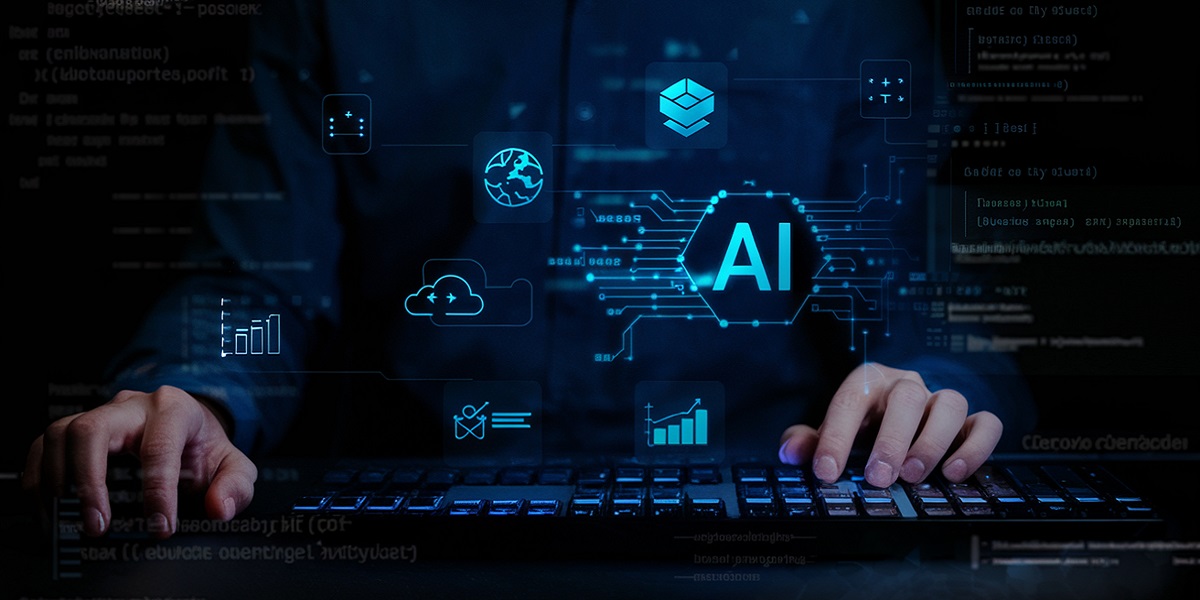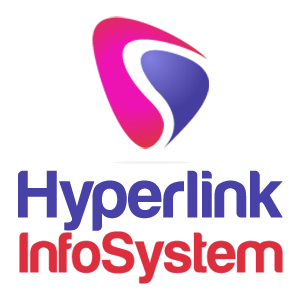
New tools are changing how software development companies work, leading to big improvements in how teams get things done. Modern programming tools make it easier and faster for developers to create better software.
Better AI and programs now handle complex coding tasks that used to take hours of manual work. Teams use smart tools to write code faster, test it better, and make it run smoothly. This is not just about using new tools – it is about completely rethinking how we build software.
These changes bring up important questions. How will jobs change? What new plans do companies need? Which skills will matter most? While new tools make many tasks easier, they can't replace human creativity and smart thinking.
Software development keeps changing rapidly, bringing new ways to build and deliver computer programs. To succeed, developers must keep learning new methods and improving their technical skills.
New tools are reshaping how software development companies work, but they're not eliminating jobs. Instead, they help developers work better and focus on solving bigger problems. The field is growing and changing. Developers who learn to use new tools while bringing their own creative ideas will keep driving progress forward.
Building software involves more than following technical steps. It combines careful thinking with creative problem-solving and understanding what people need. Programmers aren't just technical workers - they're inventors who turn complex challenges into useful solutions.
Good software companies need experts who do more than write code - they create programs that people enjoy using. These professionals mix technical knowledge with understanding how people think, making programs that feel natural and solving real problems.
The heart of programming is understanding human needs. It takes imagination to see how technology can make daily life better, skill to build strong systems, and wisdom to know what users want. Every piece of code from AI software engineering represents careful thinking about how to connect technology with human needs.
In the end, great software creates meaningful connections between technology and how people live their lives.
Think about different cultures or how people prefer to use programs. Can AI truly understand these details? Not yet. Human developers in a software development company bring critical thinking and creativity - things that automated tools can't fully copy.
As new tools handle routine tasks, developers are taking on more important roles. Instead of fixing small errors or tweaking code, they now focus on:
Planning how systems work together
Creating new features people love
Working with teams to build better products
The need for skilled developers keeps growing. It's just changing shape. Those who know how to use modern tools effectively become even more valuable to their teams.
New technology transforms everyday tasks into smooth, quick processes. By handling repetitive work automatically, these systems free up professionals to focus on creative and valuable projects.
Today's software teams use smart systems to:
Solve complex problems faster
Reduce mistakes in routine work
Use resources more wisely
Get more work done in less time
Advanced systems now handle complicated calculations, process data, and find patterns faster than ever before. This shift lets skilled professionals spend more time on creative design, strategic planning, and breakthrough solutions.
The real value of code optimization with AI isn't about replacing talent - it's about making people more effective. By handling standard tasks automatically, companies help their most important asset - human creativity - tackle bigger challenges and drive meaningful progress.
In the past, writing efficient code meant lots of trial and error. Developers spent hours rewriting and adjusting to improve performance. Now, tools make the process of software development simpler. Code improvement turns complex programs into streamlined, fast-running solutions.
By carefully examining how programs work, experts find hidden problems and develop better solutions. These improvements make programs run faster, use less computer power, and avoid slowdowns.
Developers now create stronger, more efficient code that works better and uses fewer resources. This process of technological automation involves careful analysis, smart redesign, and precise changes that boost performance. The result? Cleaner, faster, and more reliable programs that meet high technical standards.
Software testing with AI is crucial but doing it by hand takes too long. Modern testing tools work faster and catch more problems than manual checking ever could. These tools can run thousands of tests at once, find bugs quickly, and get better at spotting issues over time.
Finding and fixing bugs used to feel like detective work. Now it's more straightforward and organized. Expert developers use special tools to find programming mistakes, logic errors, and weak spots in their programs. By looking closely at how software is built, teams can spot performance problems, coding mistakes, and security risks.
This careful approach works on many levels:
- Checking code without running it
- Testing programs while they run
- Measuring how well programs perform
Special tools help developers track down exactly where errors happen and suggest ways to fix them. But it's not just about finding mistakes - it's about building stronger, more reliable programs. Skilled programmers use modern methods to turn problematic code into smooth-running solutions that work well and stay secure. Teams can now catch problems early, saving time and delivering better products.
New tools help teams work together more smoothly too. They suggest useful code examples that match how teams work, while smart version control prevents conflicts when multiple people work on the same project.
By using automatic systems for routine tasks, developers can focus on bigger challenges that need creative thinking and innovation. Simple, repeated tasks get handled systematically, freeing up skilled professionals to work on complex system design, breakthrough solutions, and important planning decisions.
This shift turns technical work from basic coding into creative problem-solving. It helps engineers think bigger and try new approaches to software development. When teams use these tools well, they multiply what developers can achieve, letting them push boundaries and create groundbreaking solutions.
Software companies are changing how they build programs using advanced solutions. Modern tools play a key role throughout the entire development process. During planning, teams use helpful tools to develop new ideas and improve project strategies. When designing programs, smart systems help create better blueprints and user-friendly designs.
Code writing tools help developers produce higher-quality work more quickly. Finding bugs becomes more precise with automatic error detection and helpful suggestion systems. Testing gets better through systems that can predict problems before they affect users.
Smart systems now help predict project risks, manage resources better, and show how well programs are performing in real time.
These advances aren't just nice extras - they're essential parts of modern software development that dramatically improve how teams work and innovate.
Modern programming tools have changed the game for the best software development companies. They help create working code from simple descriptions. Development teams now work faster and smarter, completely changing how they write programs.
Smart tools handle repeated coding tasks, cutting out boring work and speeding up projects. These systems help teams finish in days what used to take weeks, while making fewer mistakes and creating better software.
By reducing manual work, teams can focus on solving complex problems and designing innovative solutions. This leads to faster, more accurate programming that helps teams reach higher standards.
Finding and fixing problems is the hardest part of software development. Modern tools make this process more proactive. They can study code patterns, spot potential issues, and suggest fixes before problems grow. It's like having a careful assistant checking every line of code.
New testing tools keep up with fast-paced development. They can run many tests at once and catch errors that would take people hours to find. This doesn't just save time - it ensures customers get reliable programs.
Support tools don't just help with projects; they help people learn. Learning platforms suggest resources that match each developer's needs. Whether someone needs documentation, tutorials, or examples, these tools for software testing with AI help developers improve their skills while working.
Every new advancement brings both good and bad points. Modern development tools are no different. Each opportunity comes with risks that need careful thinking.
Faster Project Completion
Modern tools streamline work, helping teams finish projects more quickly.
Lower Costs
Automatic tools catch bugs early, meaning less time fixing problems later.
Better Growth
Smaller teams can now handle bigger projects thanks to helpful tools.
Fewer Mistakes
From software coding to testing, modern tools reduce human error.
These advances have also made AI programming more open. Smaller software development companies can now compete with bigger ones by using tools that level the playing field.
But these tools bring their own problems:
Built-in Mistakes
Tools might carry forward mistakes from their training.
Security Risks
Software testing with AI might accidentally create new weak spots.
Lost Skills
Depending too much on AI software tools can weaken basic coding skills.
Trust Issues
Questions about responsibility and transparency need answers.
Managing technological risks demands a strategic as well as multifaceted approach. Organizations must implement rigorous evaluation processes to recognize potential vulnerabilities within emerging technological frameworks. It requires developing comprehensive risk mitigation strategies to encompass several critical components.
Regular audits are important for maintaining system integrity. They help in identifying potential weaknesses before they become significant problems. These assessments should be conducted with precision along with objectivity. The purpose is to examine technical processes and potential systemic vulnerabilities.
Establishing clear ethical guidelines provides a robust framework for responsible technological development. These guidelines must be more than theoretical constructs—they need to be practical, actionable frameworks that guide decision-making and promote responsible innovation.
Comprehensive training programs are crucial for empowering technical professionals. These programs should focus on developing critical thinking skills, understanding technological nuances, and cultivating a deep comprehension of system limitations and capabilities.
The most effective approach integrates human expertise with technological capabilities, creating a synergistic environment where human judgment and technological efficiency complement each other. This balanced strategy ensures more reliable, responsible, and intelligent technological solutions that maximize potential while minimizing risks.
Adopting AI is not a straightforward process. It requires a shift in mindset and operations. Here’s a step-by-step guide:
Identify where AI can make the biggest impact. Is your team struggling with testing? Is debugging a bottleneck? Start there.
AI tools are as good as the people using them. Organize workshops and mentorship programs to teach your team how to leverage tools effectively.
Test AI tools on smaller projects before scaling across the organization. This allows you to identify strengths and weaknesses without risking critical workflows.
Set clear KPIs to measure success. Is your team saving time? Are error rates decreasing? Use data to refine your approach.
AI’s potential extends beyond coding and testing. Here are other areas it’s making waves:
Predictive AI tools help managers allocate resources and set realistic deadlines.
AI can modernize legacy systems by converting outdated codebases into current languages.
AI monitors software performance, detecting issues before they affect users.
Software development companies are experiencing a transformative shift through advanced technological integration. These powerful tools dramatically enhance productivity by accelerating repetitive processes and minimizing human error while simultaneously unlocking unprecedented innovation pathways. However, technology remains fundamentally a complement to human expertise, not a substitute for creative problem-solving.
The strategic approach for forward-thinking organizations involves measured, intentional adoption. By implementing incremental technological solutions and investing in comprehensive team training, businesses can effectively leverage these emerging capabilities. Those who approach this transition with thoughtful planning and a balanced perspective will position themselves at the competitive forefront of the software development landscape.
Real power emerges not from replacing human talent, but from creating symbiotic partnerships between technological capabilities and human intelligence. This collaborative model promises to reshape development practices, driving unprecedented efficiency and breakthrough innovations across the industry.
